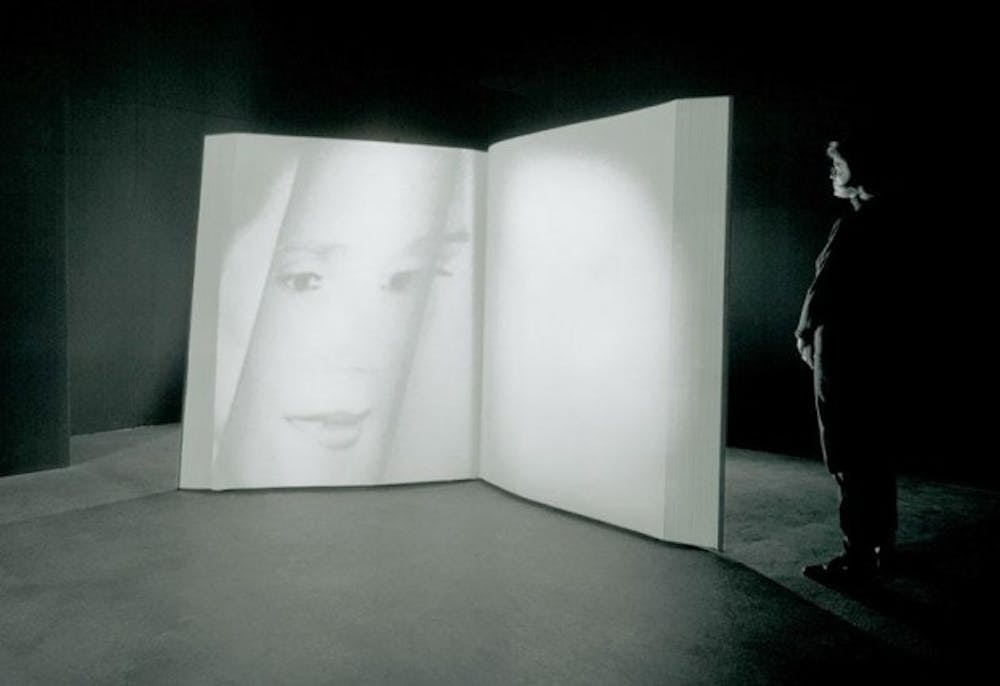A collage of videos stretch across the walls of a room as each moving image captures the raw expressions and disciplined fingers of classical musicians. The piece is titled, Entre le son et l'image, or Between the Sound and the Image, and is one of many sophisticated works created by the innovative artist Sylvie Bélanger.
Bélanger, an associate professor in the department of visual studies, has taught at UB since 2003. Her expertise, however, extends beyond the walls of UB and reaches worldwide, having done exhibits throughout the U.S., Canada, Western Europe, and Eastern Asia. But despite her international success, she maintains a humble view of her work, even declining her picture to be taken with any of her art.
"Art should be represented by the art, not by the artist," Bélanger said. "I've made only two works that I'm extremely satisfied with, among many, many, many, many, works."
One of these pieces that Bélanger speaks proudly of is, Entre le son et l'image. The piece, which initially exhibited in Japan, was inspired by a constant bombardment of music, combined with her love of the cello.
"I just put my iPod in my ears for three days," Bélanger said. "Everything I was doing – walking, shopping for my groceries, whatever I was doing – I always had music with me.
One night before going to bed, she had been listening to a tango and it was then that she knew what she wanted.
She contacted a French composer and had him compose a piece for her embodying the "violence, and the playfulness, and the passion" that tango offered, balanced by the accompaniment of the cello and flute.
"Sylvie Bélanger mediates technology in deeply thoughtful ways by making works of substance, grace and intelligence," said Millie Chen, the chair of the department of visual studies. "She is an artist who is dedicated to ideas and knowledge while simultaneously attentive to the importance of pleasure within the art experience, creating richly aesthetic, sensual and provocative experiences."
Bélanger's love of art and aesthetics is apparent in her classroom. She has been teaching for over 20 years and has dedicated a lot of time and effort to her students, pushing them to achieve and be the best they can be, according to Porsche Jones, a junior studio art major.
"She can reach into your head and find the exact right word for the concept you are trying to describe," Jones said. "This is invaluable in artistic practice, because it makes you more aware of the dialogue in your work."
Bélanger's ability to meet students on their level while expanding their depth of knowledge is one reason why she is so highly regarded among the artistic community, according to Louise Noguchi, professor of photography at the University of Toronto/Sheridan College and a former student of Bélanger.
Before settling at UB, Bélanger had taught at the University of Windsor, the San Francisco Arts Institute, the University of Toronto/Sheridan College, and Concordia University.
"Many students from Canada and around the world chose the University of Windsor just to study with her," Noguchi said. "These undergraduate students are often the top choices of graduate schools and receive significant scholarships – she has an amazing skill at developing the level of her students. As a graduate professor, she likes to challenge her students and enjoys the challenge of instructing the graduate seminar class. Her classes are stimulating and engaging as she has the ability to interest students in discussion with her knowledge of art."
Bélanger herself has been the recipient of many awards and grants, including the Joseph L. Stauffer Award for Outstanding Mid-Career Artist from Visual Arts in Canada in 1995. She also has received a number of research and production grants from the Canada Council for the Arts, the Ontario Arts Council, the Chalmers Foundation, Canadian External Affairs/Japan Foundation, Alliance Française, the Ontario Ministry of Culture and Tourism, and the Toronto Arts Council, according to Chen.
Although she is the head of the photography department, Bélanger admits she is not bound by the constraints that photographs impose in her artistic works.
"I don't work only on photography. I don't consider myself [just] a photographer," Bélanger said. "I use different mediums according to different pieces…I use sound, I use video, I use photography, sculpture, other ways are always mingling in my work."
Bélanger attributes her successes in the classroom to allowing her students to explore themselves through their works with different designs and emotion. She encourages her students to read and go to art and dance exhibitions to find a perspective that works for each of them.
"What is important is that the student finds their voice," Bélanger said. "I don't believe in originality, I think originality is a concept from the modernist. I believe in the individual bringing something different in their work."
Bélanger does not draw her inspiration from one particular person or event. Rather, she often immerses herself in her surroundings and believes that it is from the many experiences coming together in a particular moment that help her find her inspiration in creating her works.
"It was a way of seeing the world," Bélanger said. "Art is not black and white. It is always in the between in the white and the black that everything is happening."
Email: features@ubspectrum.com





